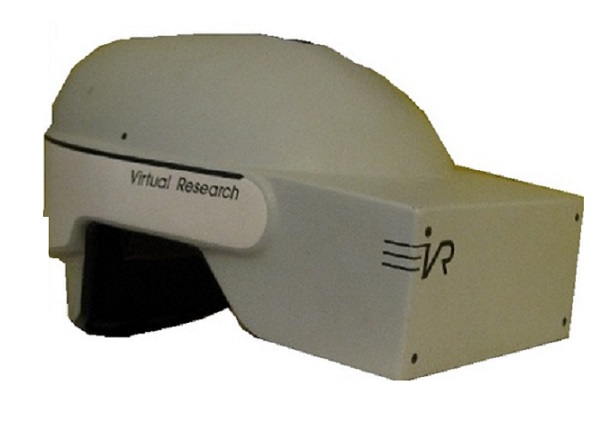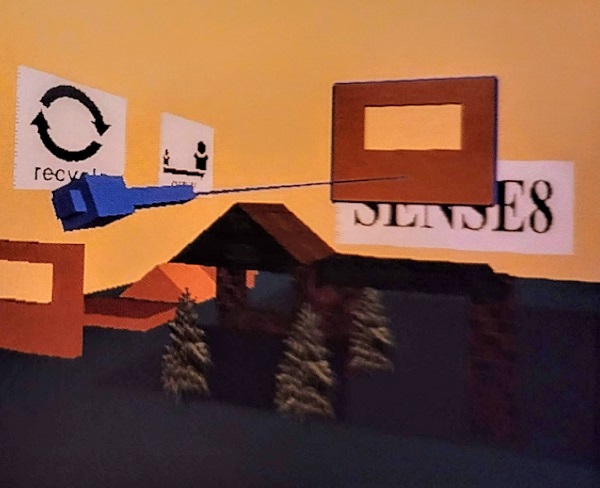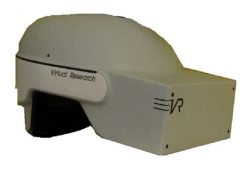It was clear VR had to be powered with a powerful PC, but how is a PC transformed into a magic carpet ride through a virtual world with hills, trees, and wide rivers? How can you use one to create such a world in the first place? By focusing on a PC solution it proved VR isn’t a technology restricted to those with multimillion-dollar budgets—it’s well within the reach of average-sized businesses.

To create a good sense of immersion, you’ll need a head-mounted display like Virtual Research’s Flight Helmet. Because these helmets accept only TV-formatted signals (NTSC), you also need a couple of signal converters. To keep the costs down, a Logitech ultrasonic head-tracker can be used to monitor the helmet orientation. Recreating the sound of the virtual radio so that it’s spatially oriented will require a convolving engine like Crystal River Engineering’s Beachtron, which also happens to have some sound synthesizing capability (for the wind sound).
Trying to select the lamp while wearing an HMD is a little tricky. A wired glove would be useful, but it’s too expensive. Instead, the navigation device will have to do double duty. To get around the virtual world, a Gravis MouseStick will provide an inexpensive and intuitive solution. Moving objects around and changing lighting dynamically is a feature of Sense8’s WorldToolkit, which also supports all the devices listed and described so far.

In addition to all these devices, you also need a 3-D modeller, like Alias Upfront or AutoCAD, to construct the basic objects in the world and an image or paint program that can read in scanned photographs and allow modifications for making custom textures. Each of these pieces plays a role in creating and exploring a believable virtual environment. The good news is costs of VR headsets these days are affordable to just about everyone and not much more than the average price of a games console (many people would say this puts VR in direct competition with the consoles).
Back in 1989, there was only one mass-produced headset for industry and commercial use and that was Sense8’s, but just a single year later all that was about to change.


